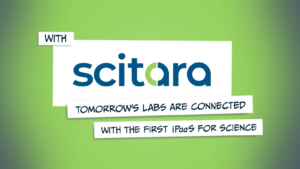Digital transformation in the lab is a major challenge to many companies’ overall digital strategy. The diversity of lab systems and equipment and related workflows poses a daunting challenge to fully digitizing lab processes and enabling data mobilization. Digital decoupling is rapidly becoming a driving strategy for laboratories to achieve digital transformation.1 The essence of digital decoupling is that different actors in the lab ecosystem (LIMS, instrument software, and even instruments themselves) should be deployed to focus on their core attributes and not try to achieve a “one system does all things” approach which has been shown repeatedly to fail. In a digitally decoupled model, each element of the lab ecosystem focuses on what it is designed to do and does well. This model calls for an independent data mobility and integration strategy that is separate from all other lab ecosystem components yet can connect to all of them.2
As technology has grown and expanded, the need to fully break down data and information silos has expanded as well. Indeed, information silos of any kind impede informed decision making. In support of data transformation overall and aligned with the digital decoupling philosophy, it is time to include data lakes as an integral part of the lab ecosystem and no longer consider them a separate IT platform. Inclusion of data lakes as a lab ecosystem connected endpoint aligns them with other similar informatics endpoints such as LIMS, E-Notebooks, and enterprise lab instrument integration software. What are the implications of this approach for digital transformation and digital decoupling?3
If we apply the digital decoupling strategy to data lakes, we should first identify what the core mission of a data lake is. The following represent key attributes of a typical data lake based on current literature and customer feedback:
- Data Aggregation – providing a central repository for data from multiple sources as needed throughout the organization.
- Data Access – data contained within the data lake should be searchable and support FAIR principles.
- Flexible Data Model – support for structured, semi-structured, and unstructured data – providing the flexibility to accommodate the data attributes of the multiple sources feeding the data lake.
- Data Context – data model support for high-quality contextual data, allowing primary data to be highly leveraged by user-chosen analytics tools.
- Business Changes – flexibility for the end-user to adjust or modify the data model to accommodate changes in business need and/or data types as their needs evolve.4
As data lakes have become more popular, it has become tempting to combine the core attributes and core mission of data lakes with other capabilities. This has also been the case with other large informatic platforms such as LIMS, E-Notebooks, MES, and other platforms. This approach results in a platform that may be attractive from a management simplification perspective but fails to meet the broader mission. While these platforms may excel at what they were originally designed to do, when they expand to also try and cover areas they were not originally designed for, the experience is often less than optimal.5 Data Lakes examples include commercial platforms that also include data integration and/or a locked vendor-based data model that is not under customer control. From a data lake perspective, these approaches oppose the data decoupling model and create an even larger, closed monolithic platform further downstream.6
The importance of a separate and independent integration platform is a critical part of a digitally transformed lab in general and a digitally decoupled data lake strategy specifically. An independent integration platform provides maximum flexibility to connect the data lake in a user-configurable manner to any laboratory ecosystem endpoint, whether instrument-based or informatics. This provides the flexibility to design the data lake based on real business needs, without altering the real purpose of the data lake to accommodate other challenges.7
Scitara Digital Lab Exchange (DLX), the iPaaS for Science, has a modern composable architecture providing an independent data mobility and integration platform. This unique platform supports laboratory digital transformation, data decoupling, and automated data transfer for LIMS and ELN, enabling seamless and efficient data exchange between different components of the lab ecosystem. It allows data lakes to receive high-quality, primary data with context-rich metadata from any instrument or platform in the lab ecosystem. From the Scitara DLX perspective, a data lake is part of the interconnected lab ecosystem and may exchange information in multiple directions with multiple other Scitara DLX connected endpoints. Labs using Scitara DLX may deploy data lakes where they have complete control of the data model, can add or remove technologies at will, and have confidence that no matter what they do, or what future business needs arise, they can integrate and mobilize their data to add value in an environment that is totally under their control.
Footnotes
1“Digital decoupling: Unlock value and protect your market”. Accenture. Accenture, 1 Mar. 2021.
2“12 Things Businesses And IT Teams Should Know About Digital Decoupling”. Forbes. Forbes Media LLC., 20 Mar. 2022.
3“Scitara Connect: Digital decoupling and its benefits in the life science industry”. Scitara Podcasts. Scitara Corporation, 29 Nov. 2021.
4Harris, Jim. “What is a data lake and why does it matter?” SAS Insights. SAS Institute Inc., 2023.
5Hayler, Andy. “Common data lake challenges and how to overcome them”. TechTarget Data Management. TechTarget, 17 Apr. 2020.
6Morris, Evan. “Data lakes: 5 key challenges for enterprises and how to overcome them”. TECHAERIS. MagnaAquila Media, 4 Oct. 2021.
7Oliver, Andrew. “How Big Data Is Failing the Pharma Industry”. Lucidworks. Lucidworks Legal Agreements, 25 June 2018.
